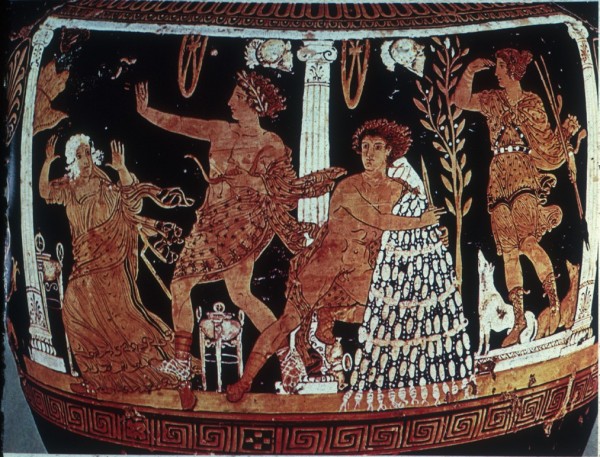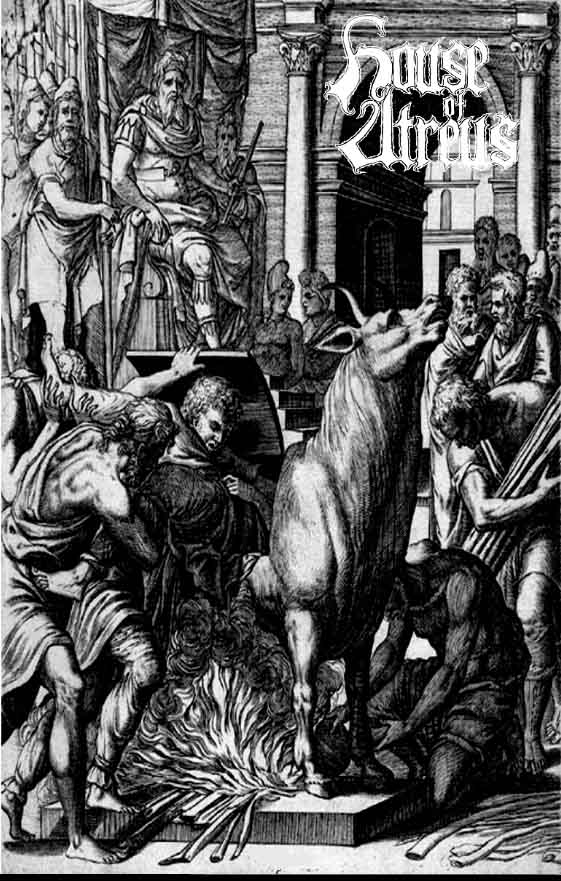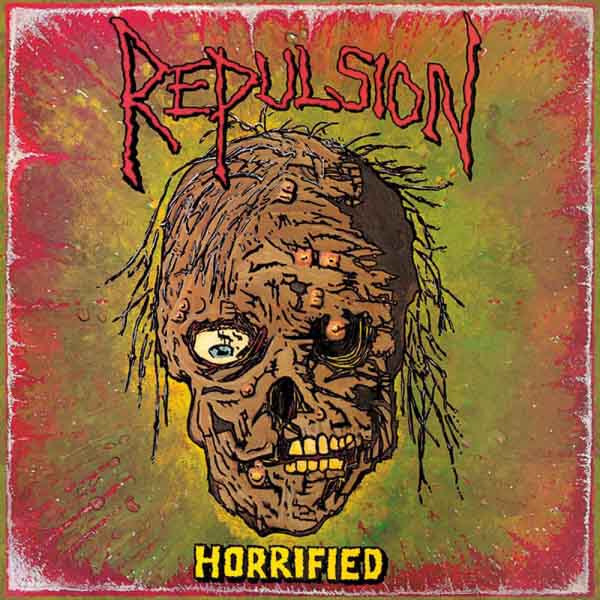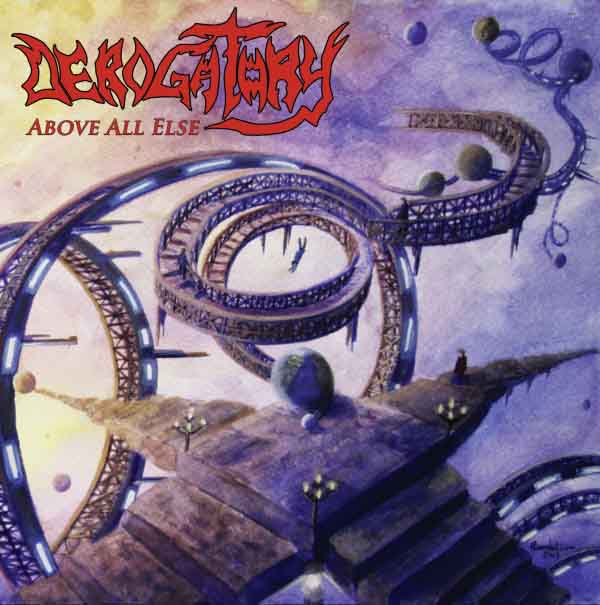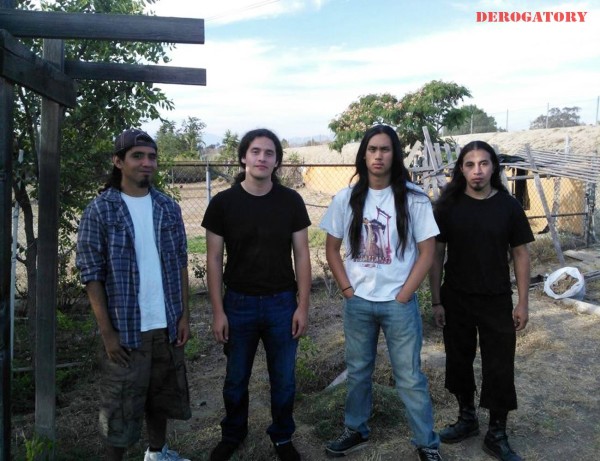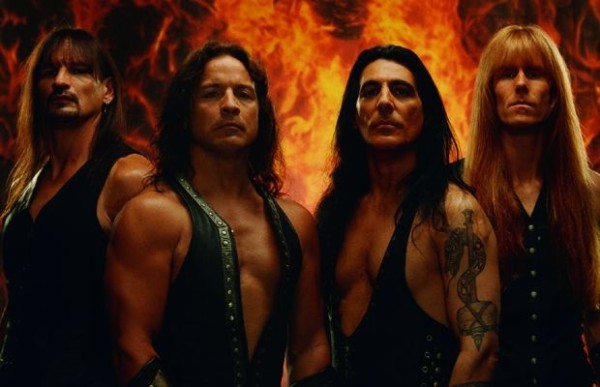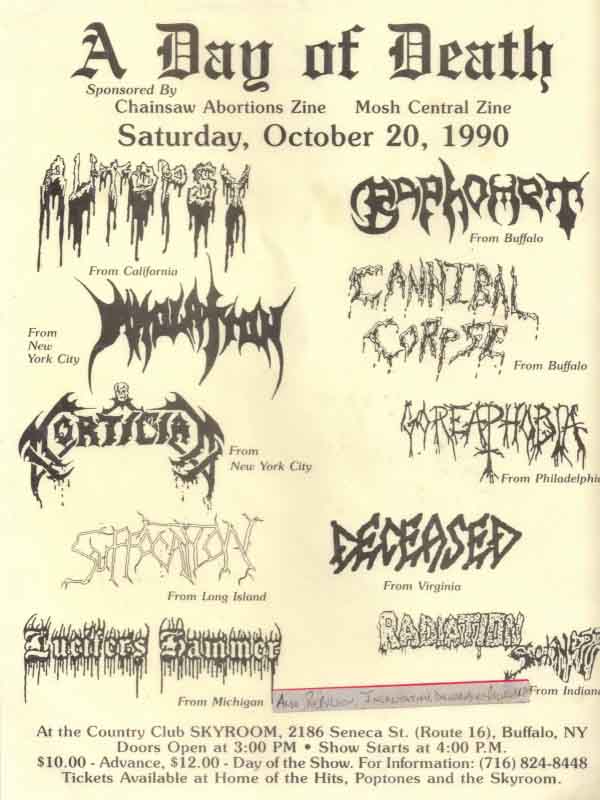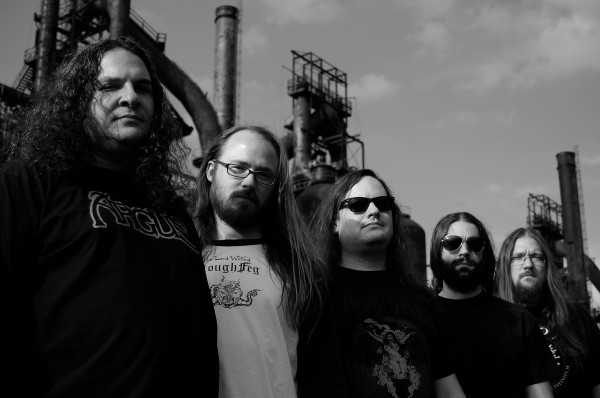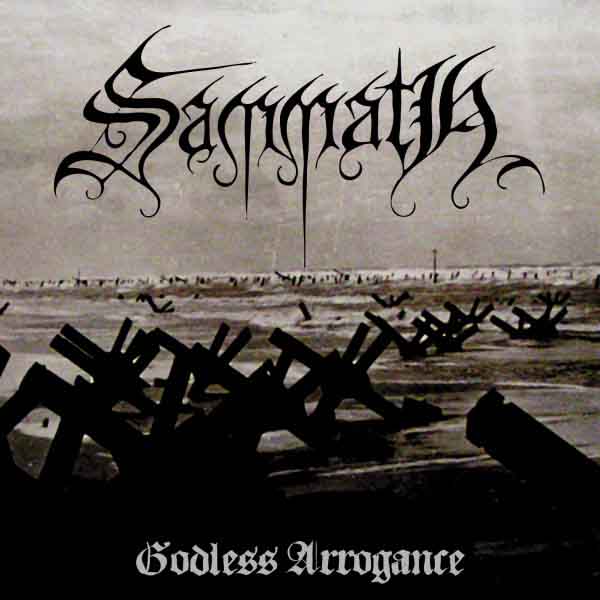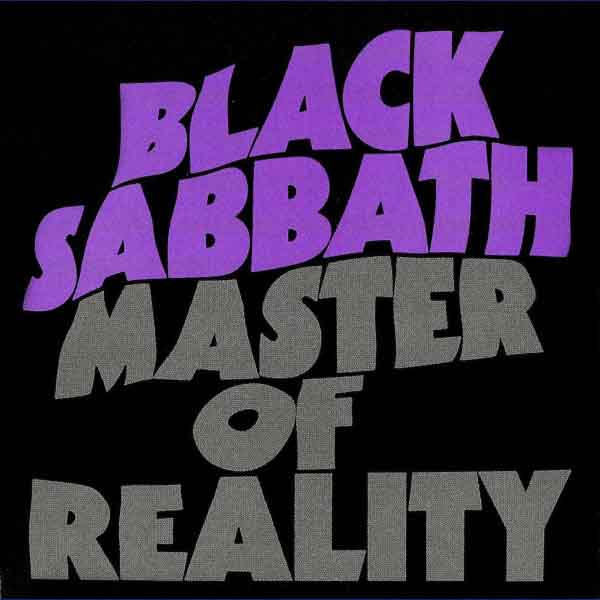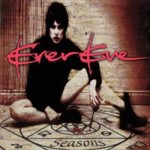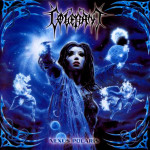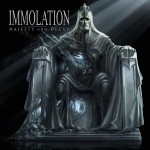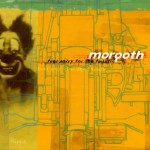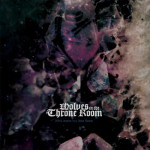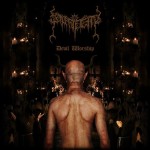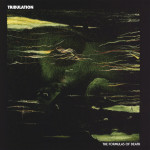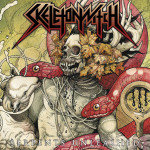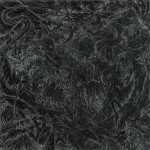Coming from the Arghoslent/Sacriphyx school of rock-based melodic death metal, Minneapolis’ House of Atreus offers a metal experience for those who might prefer a bit less total extremity in the music.
Receiving media coverage from No Clean Singing and Zero Tolerance magazine, among others, the band has raised itself in the public eye. Not bad for a bunch of guys who named their band after a Virgin Steele album.
Curious about this oddball band, writer Kevin Ord went in greater depth to get the story about House of Atreus, its rock/metal hybrid style, and the path it is taking to get recognized in the underground.
Could you give us a little history of the band?
House of Atreus started out as a self project called Ashend. It was my first attempt at conceptually writing material on my own. I had contacted Paul Lovrien (The Burning Cathedral, Autumnal Winds) about helping me record the material as I had envisioned it. As we worked together he had some great ideas and eventually we decided that he and I would develop the project together as a studio only excursion. This became House of Atreus. Eventually Paul decided music wasn’t his route anymore and I invited my good friend Andy Lindbloom to join in. We incestually adopted Jordan Davis and Allen from Maledicere as we have all been friends in the same circles for years. Before we became a live group out of the studio we used the services of George “Lithras” Tzitzifas (Nordor, Among Ruins) to record the drums for the Into The Brazen Bull material.
You have a lot of groove, melody, and rock in your galloping death metal so I assume you have a lot of different influences. Who are the bands that have influenced House of Atreus’s sound?
Since we have so many unnamed contributing members the influences are pretty vast. For this project Arghoslent, Varathron, Running Wild, Rotting Christ play an important roll. Since Andy has been invited to start writing more intimately with us he will bring his influences to the table. He very much enjoys the styling’s of Fredrick “North” Norman, Holocausto and Pogrom, Athenar of Midnight and other chasers of the perfect riff. The writing process skips between whole songs being written by myself or another, or a song passed around between friends for a time. This makes it really fun and keeps egos from being inflated among many other benefits.
There has been some controversy surrounding the band because you have a sound similar to the band Arghoslent. Could you elaborate a bit on this misunderstanding?
House of Atreus isn’t a racist outfit — I say this apologetically to all the muckraking coffee shop frequenters that are launching keyboard threats and sabotaging our shows. No matter how many times I say that it won’t matter. These olfactorily-challenged naysayers are addicted to the controversy that listening to truly diverse music creates so it won’t ever end. It’s gotten so bad they send guys in establishments we frequent and try to “race-bait” the employees into saying something off color, so they can blow a whistle. What shameful behavior.
Arghoslent rules. I don’t really care about the politics although the lyrics are really out there. I wouldn’t consider this as a deterrent from listening to them though. Most people who appreciate the music have to become closet fans. It’s fucking art. Racism is extreme but it can be a part of the music just like anything else and nothing beyond that.
As an example, I love Satan in my metal but I am certainly not a Satanist. It’s funny, being a Satanist doesn’t merit enough extreme opposition for the terrified kids that have flooded the Minneapolis scene with their tight red pants and stinky haircuts for them to rally against, so they leave it alone. They are looking for the “grave racial injustice” of the guy sitting in his truck on his lunch break casually listening to something extreme that he may or may not agree with politically but appreciates the art that motivates the music.
A lot of “neo-punk” minded people forget that there is actually skill that goes behind playing an instrument and composing songs. Turning a knob on a console and screaming into your pickups about not subscribing to society doesn’t fucking count asshole. They’re all like little angry Hitlers. They can’t write anything worthwhile, so they have to try and kill everything else they cannot duplicate successfully.
How strong is the metal scene in Minneapolis?
It seems like it is breathing anew. More and more people seem to be coming to shows. Now that we have a great record store to go to things are getting more interesting. Also, one of the main places promoters targeted to have shows at (for some reason) was shut down. This afforded the other venues in town to get involved and pick up some of the larger shows and have been quite successful doing so. I think this reset button on our city forced everyone to evaluate what they wanted out of their scene. Also, having show promoters who actually enjoy good metal really helps out a lot.
Are there any bands from Minneapolis we should be checking out?
The best bands here in my opinion are Obsequiae, Celestiial, Maledicere, Masshu, Diabolical Sacrilege, Vothana, Canis Dirus, Blood Folke, Algamest, Hohl, Veil, Azrael. There are many others as well.
You have an EP coming out called Into The Brazen Bull. Is there a concept to the EP and what can a listener expect?
Expect arrogant galloping riffs, great drums, thoughtfully crafted lyrics, and solo’s you will hum through the day. The concept behind this EP is captive enslavement, war, and some historical accounts of the earlier Greco-Roman era. You can also expect tracks 2 and 3 accidentally swapped around in the booklet and the back of the CD. This was my fault.
Your excellent first demo is sold out. Are there any plans to re-release that material?
I have spoken with Antitheist Recordings about this. It is possible we would put this out on a different format. I would like to revisit a couple of the songs on this demo since after hearing them revised for our live show I feel we can better convey them and may do so on our full length.
Has there been any interest by a label in putting out a full length?
I have discussed this also with AD and if it’s possible we will. We would like to spend some time playing some shows and having fun with our material before hand.
Do you have any touring plans for 2014?
So far, no. I would like to do so in the summer/fall of 2014 if the opportunity arises. Given we have the vacation time and the means.
Does House of Atreus have anything else in the works?
We performed “Archon” on Azermodoth Record’s tribute to Rotting Christ just this past month. These should be available directly through him. You have to hear some of the other bands on this thing as well. Truly fucking stellar artists. House of Atreus also plans to take over several small countries in Europe, create a perfect class of human beings, and cleanse the world…
http://houseofatreus.bandcamp.com
4 CommentsTags: house of atreus, rock-metal
